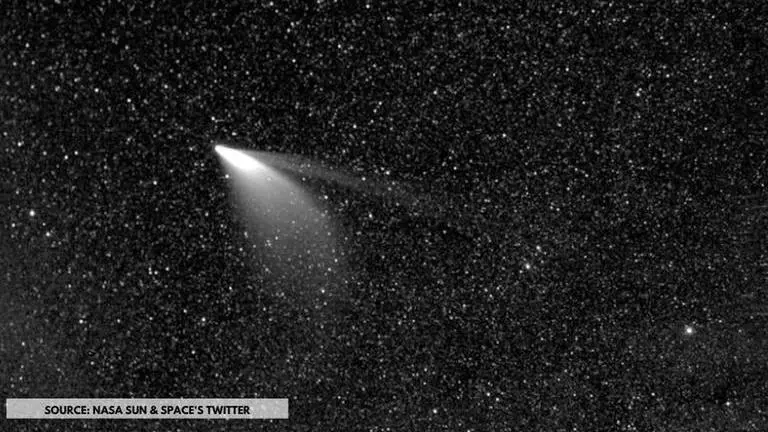Updated 11 July 2020 at 14:35 IST
Parker Solar Probe to head for its third Venus flyby on July 11, 2020
Parker Solar Probe, NASA spacecraft, is all set to perform its third Venus flyby on July 11, 2020, at 11:22 pm EDT. Check full details.
- Science News
- 3 min read

Parker Solar Probe has now completed its fifth encounter with the sun. It marks the mission’s Longest Observation campaign to date. Now, according to reports, the NASA spacecraft would turn its focus to Venus today on July 11, 2020. Its critical flyby would pass through the planet’s 'tail'.
NASA spacecraft set for Venus flyby for the third time
According to NASA’s blog, the spacecraft will perform its first outbound flyby of Venus on July 11, 2020. It will pass approximately 516 miles above the surface while curving around the planet. The Venus gravity assists in playing an integral role in the Parker Solar Probe mission. The spacecraft depends on the planet to free itself from orbital energy, which allows it to travel even closer to Sun after every Venus flyby. The mission’s previous two Venus flybys moved past the Sun-facing side of the planet. So, this will be Parker Solar Probe’s first pass on the planet’s night side.
Hello again, Venus! 👋 Overnight, #ParkerSolarProbe performs its third flyby of Venus in order to shed orbital energy, allowing the spacecraft to travel even closer to the Sun on its next orbit. More info: https://t.co/u0LQJLxjIY pic.twitter.com/2rVT2B0ign
— NASA Sun & Space (@NASASun) July 10, 2020
Parker Solar Probe will perform its third Venus flyby on July 11, 2020, UTC for setting the spacecraft up for another record-breaking close approach to the Sun in September 2020. It will witness an 11-minute solar eclipse during the manoeuvre while passing through the shadow of Venus. The Apache Point Observatory in New Mexico, Lick Observatory in California, and the Keck Observatory in Hawaii will use powerful telescopes to search for Venus aurora from the ground in coordination with Parker Solar Probe’s pass around the planet according to the weather.
This version of the image from Parker Solar Probe has been processed to increase contrast and remove excess brightness from scattered sunlight, revealing fine detail in comet #NEOWISE’s two tails: the dust tail (lower) and the ion tail (upper). pic.twitter.com/fyGMfKnFc0
— NASA Sun & Space (@NASASun) July 10, 2020
So, scientists will combine ground-based observations with data that the Parker Solar Probe would collect during its flyby. They would take an unprecedented look at the interactions between Venus and the solar wind. The Venus flyby sets Parker Solar Probe for its sixth close pass by the Sun for September 27.
Advertisement
During the same, Parker Solar Probe will travel even closer to the Sun and set a new record while passing approximately 8.3 million miles from the solar surface. It would be more than 3 million miles closer than the previous perihelion at 11.6 million miles from the same. The spacecraft’s seventh encounter would take place on January 17, 2021.
Advertisement
Also read: Mars 2020 Perseverance Rover Mission: NASA Shares 7 Things About The Red Planet Expedition
NASA launched the Parker Solar Probe in August 2018. They designed it to swoop through the Sun’s outer atmosphere and assist scientists in understanding the way the star shapes the solar system. However, to complete its seven-year mission, the spacecraft needs to adjust its speed by moving past Venus seven times. It will do that for the third time at 11:22 pm on July 11, 2020, EDT.
Published By : Vageesha Taluja
Published On: 11 July 2020 at 14:34 IST
